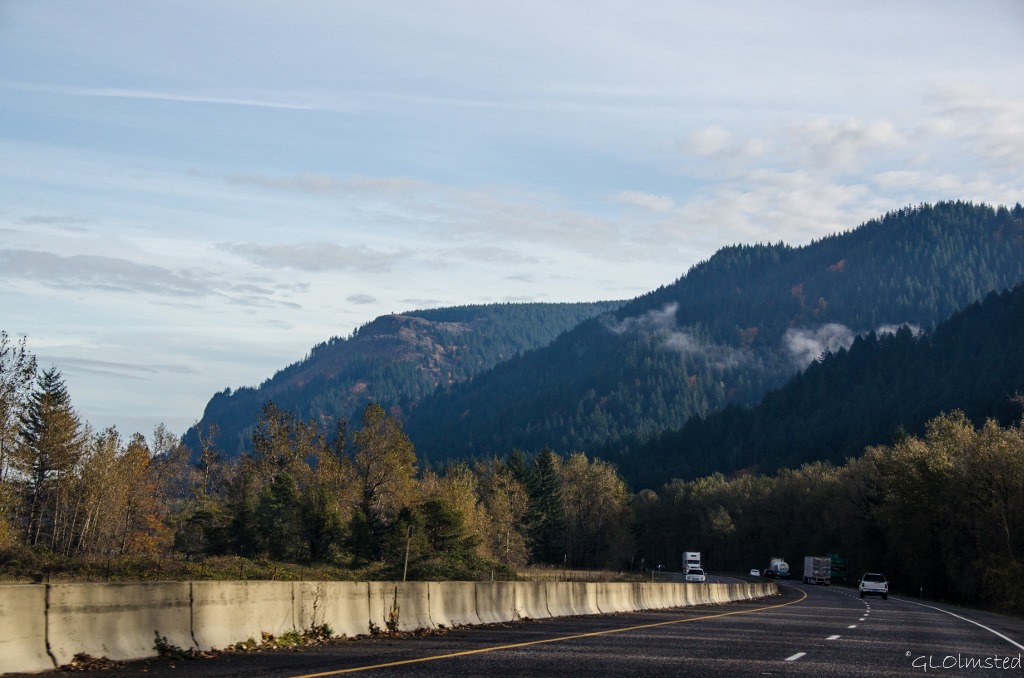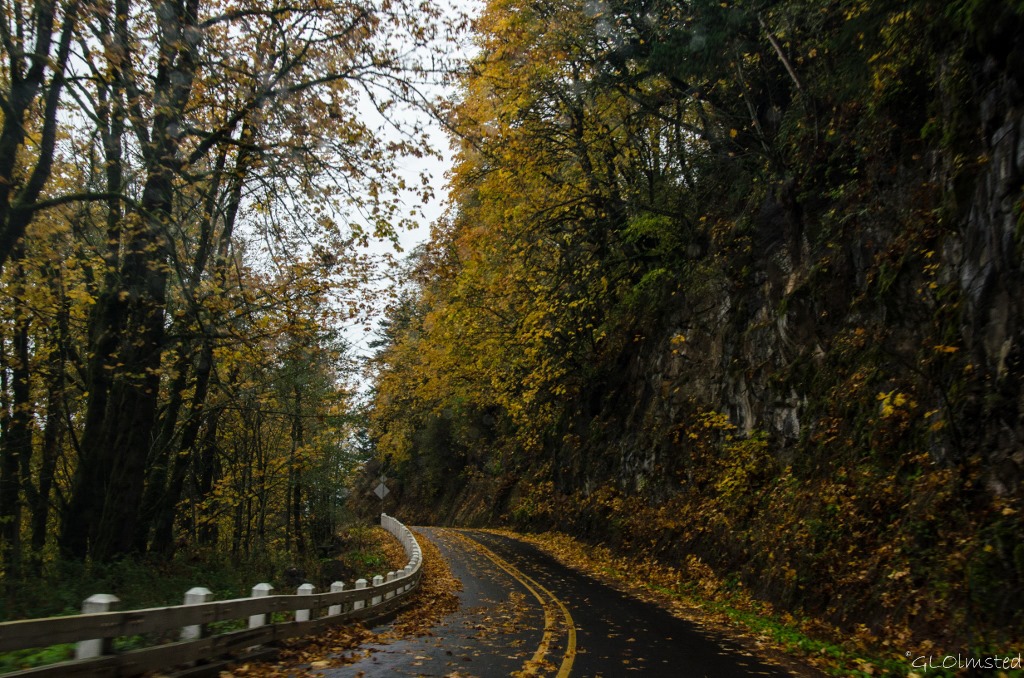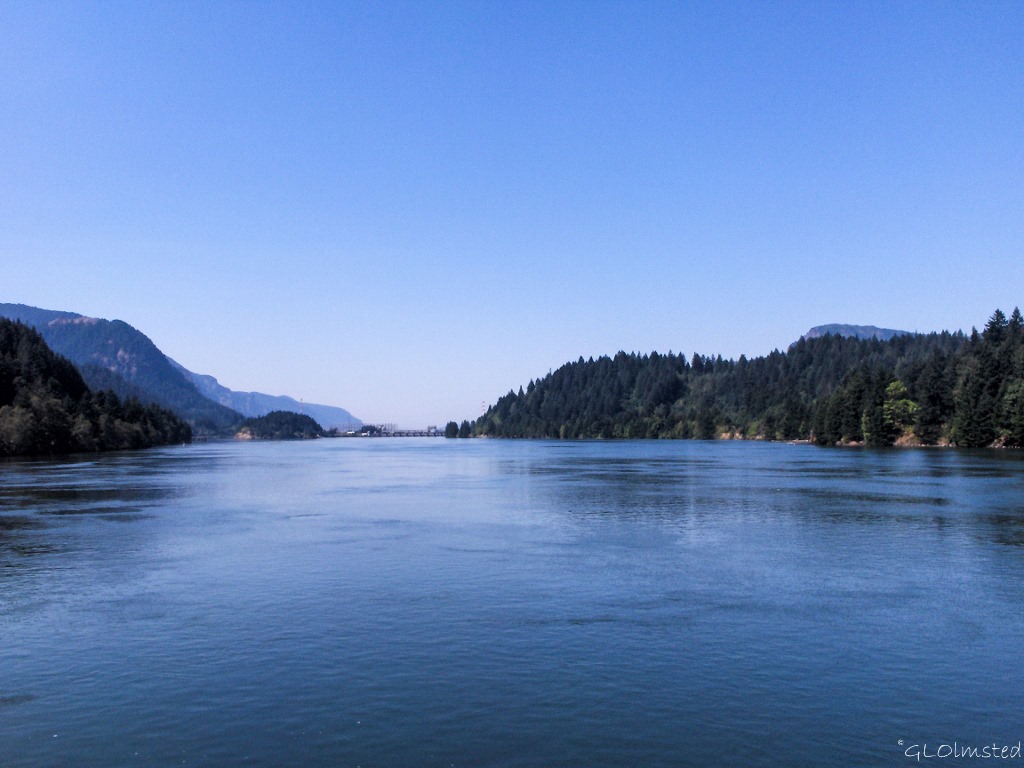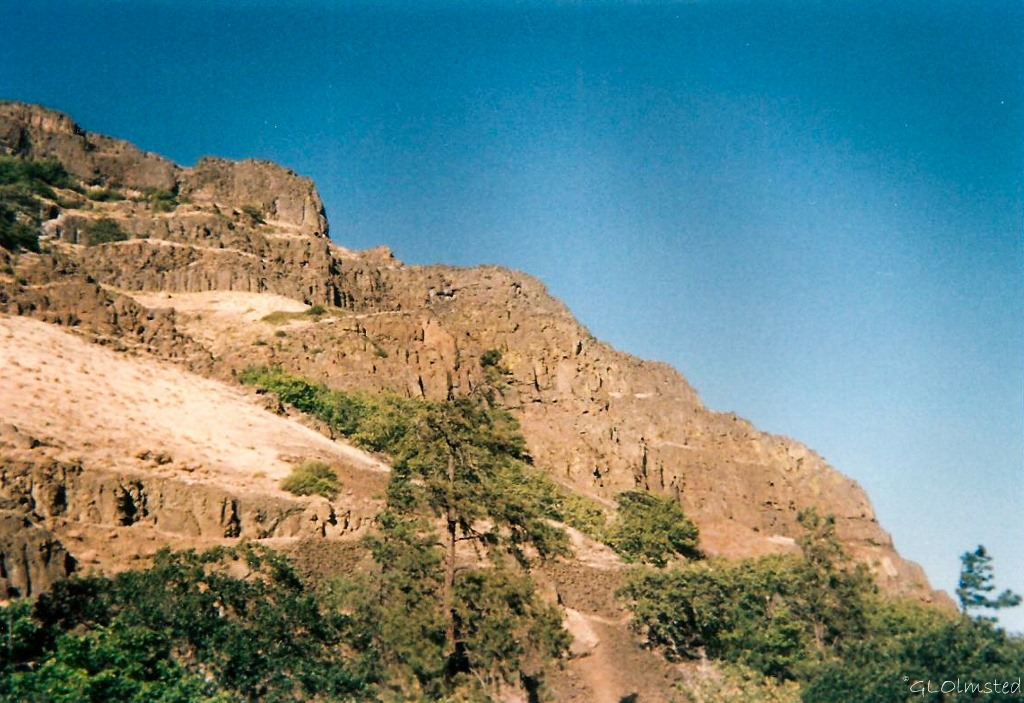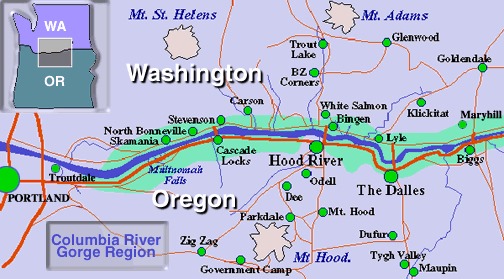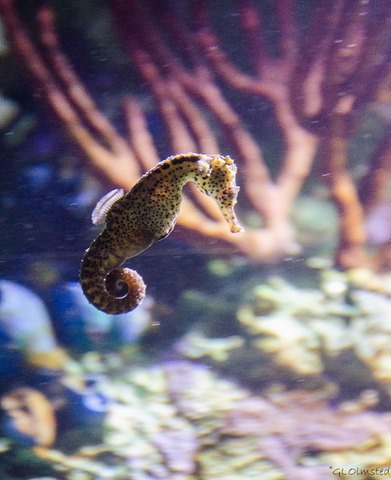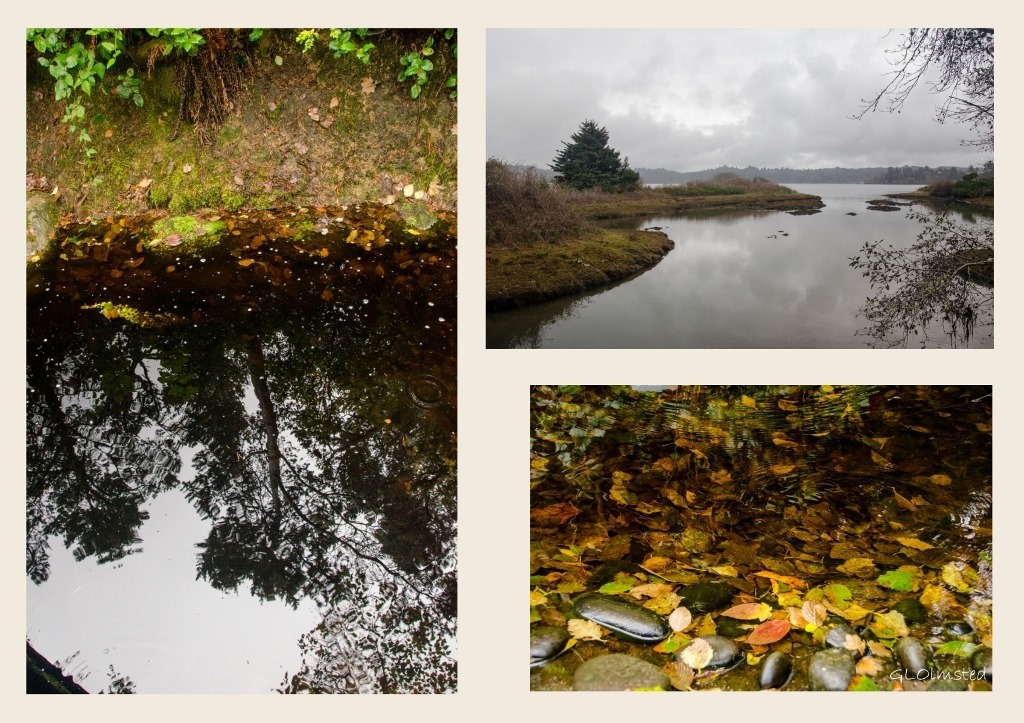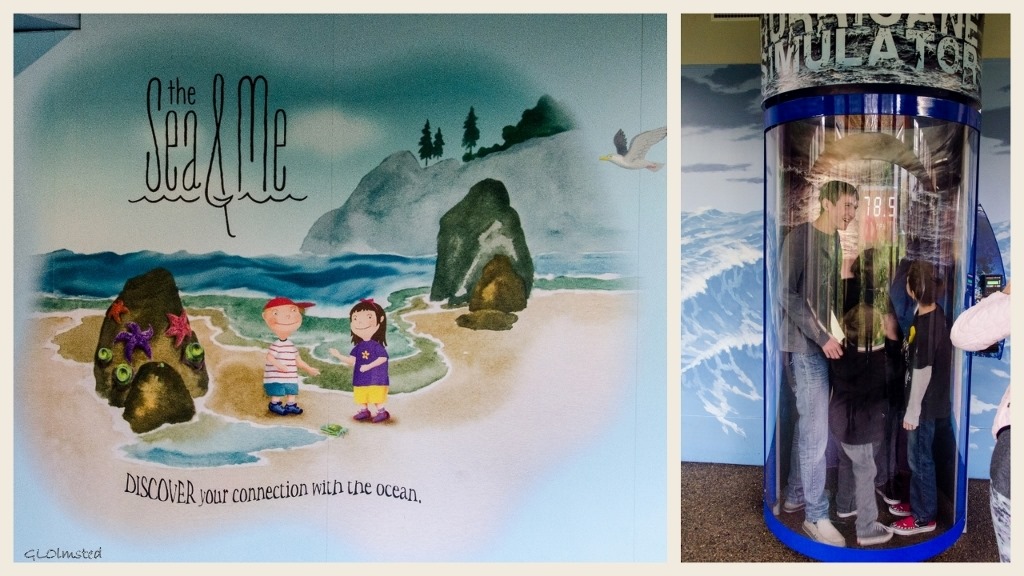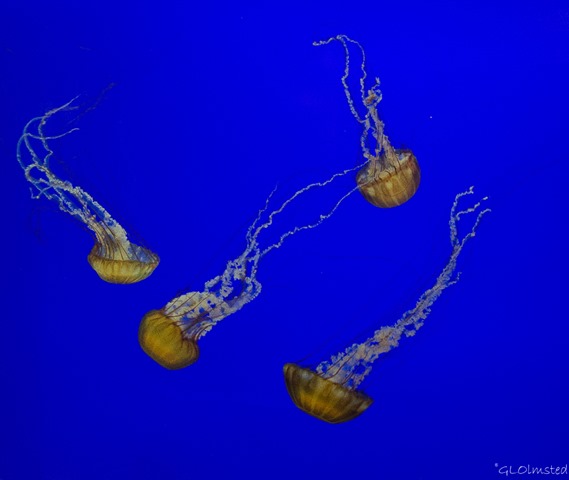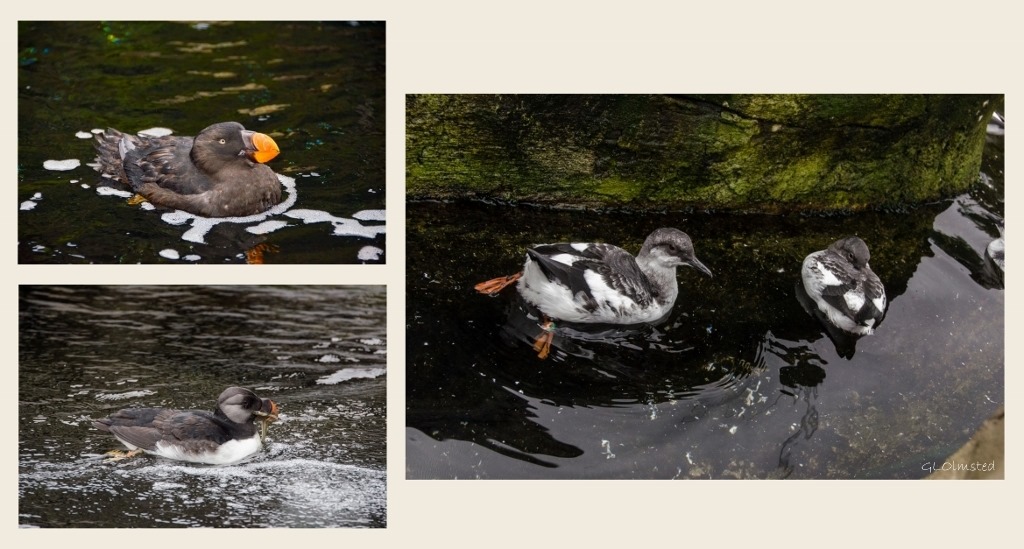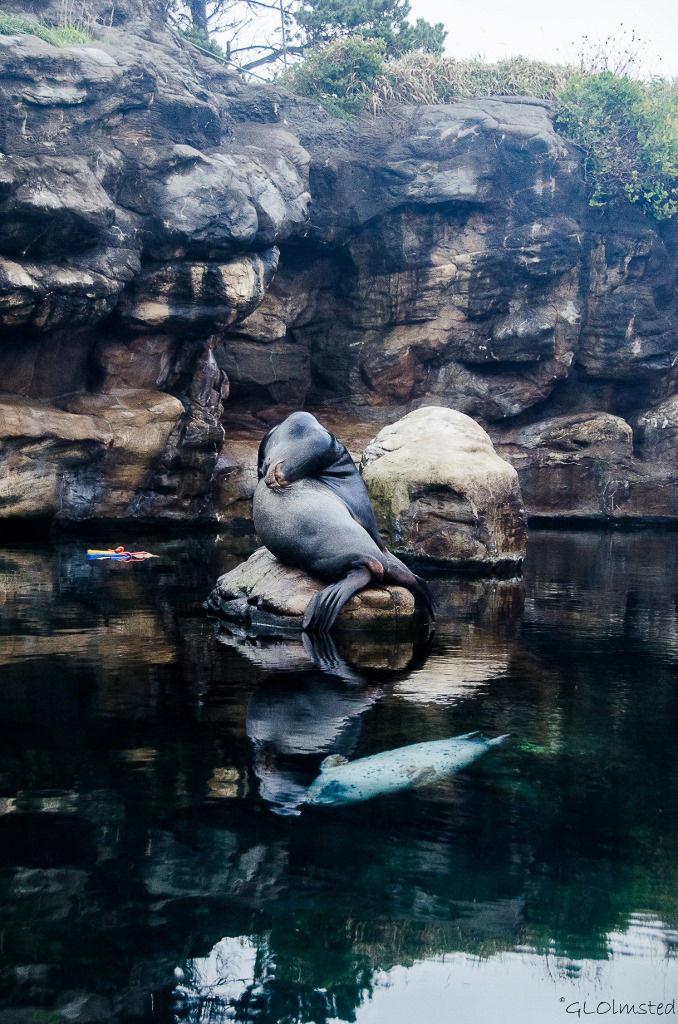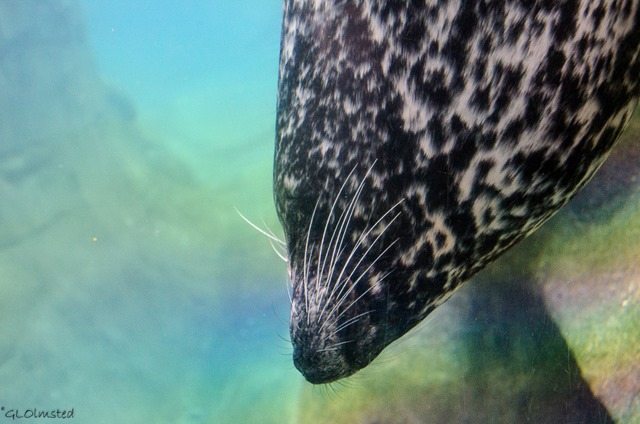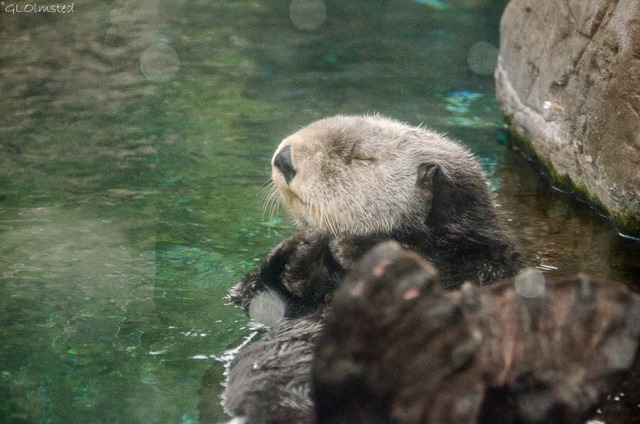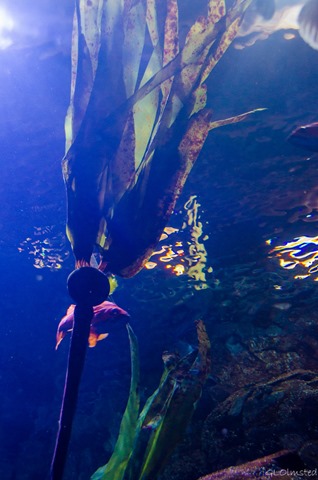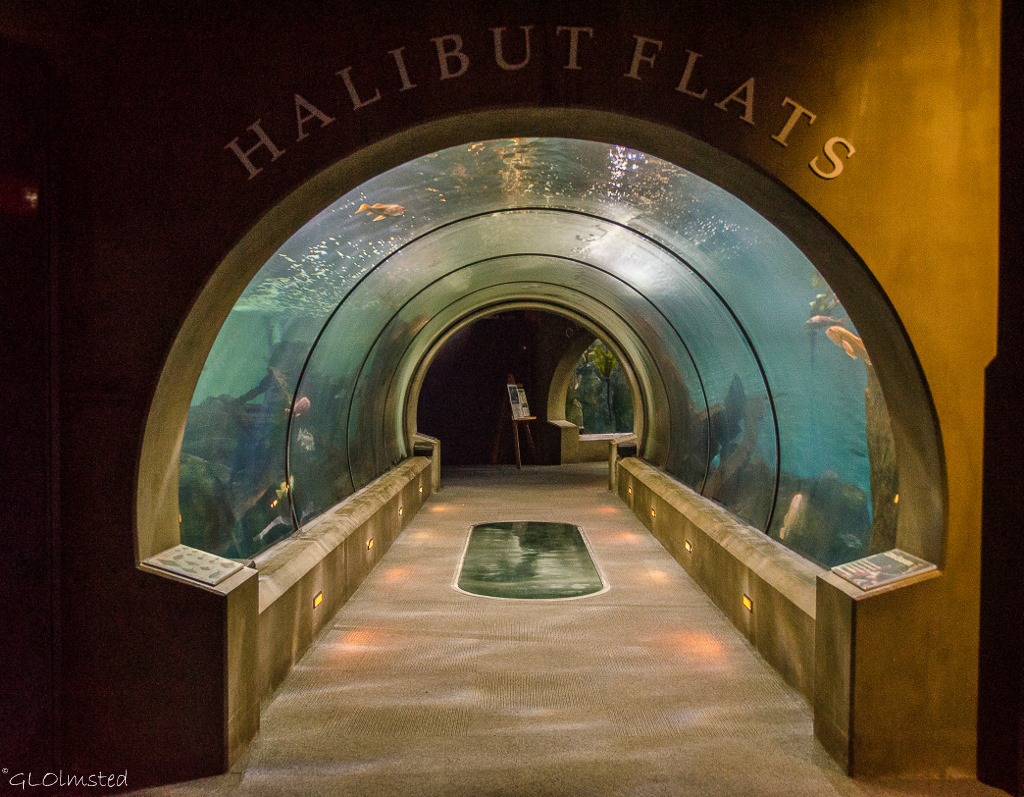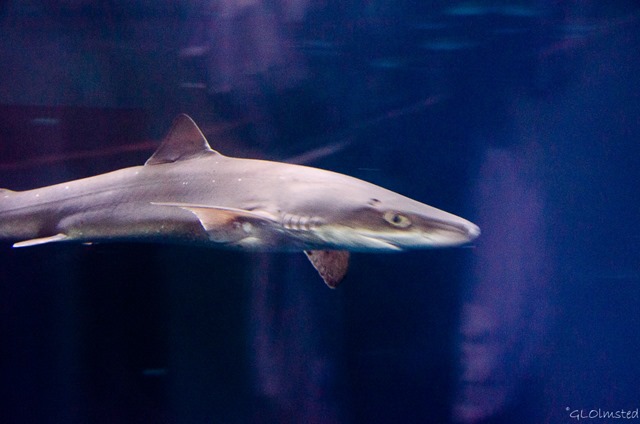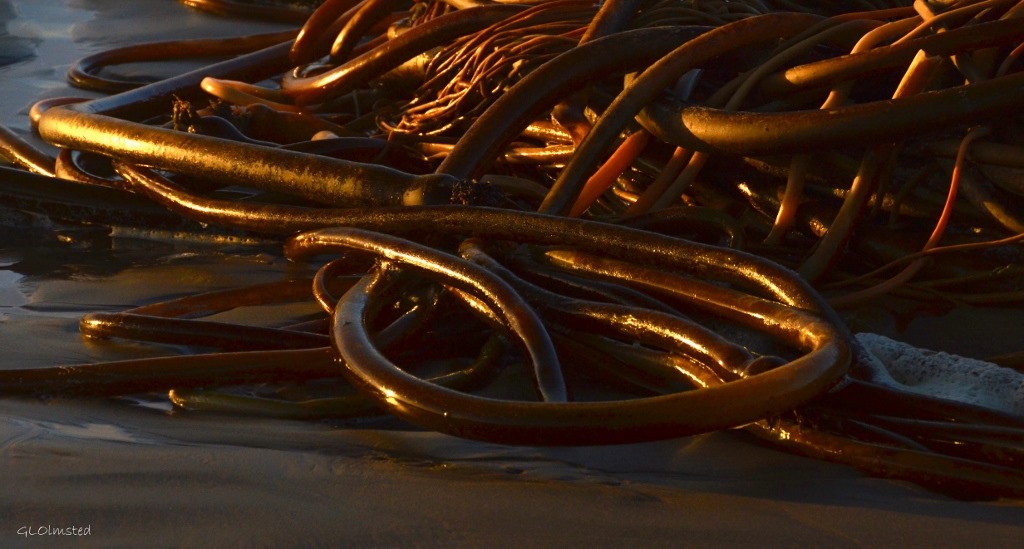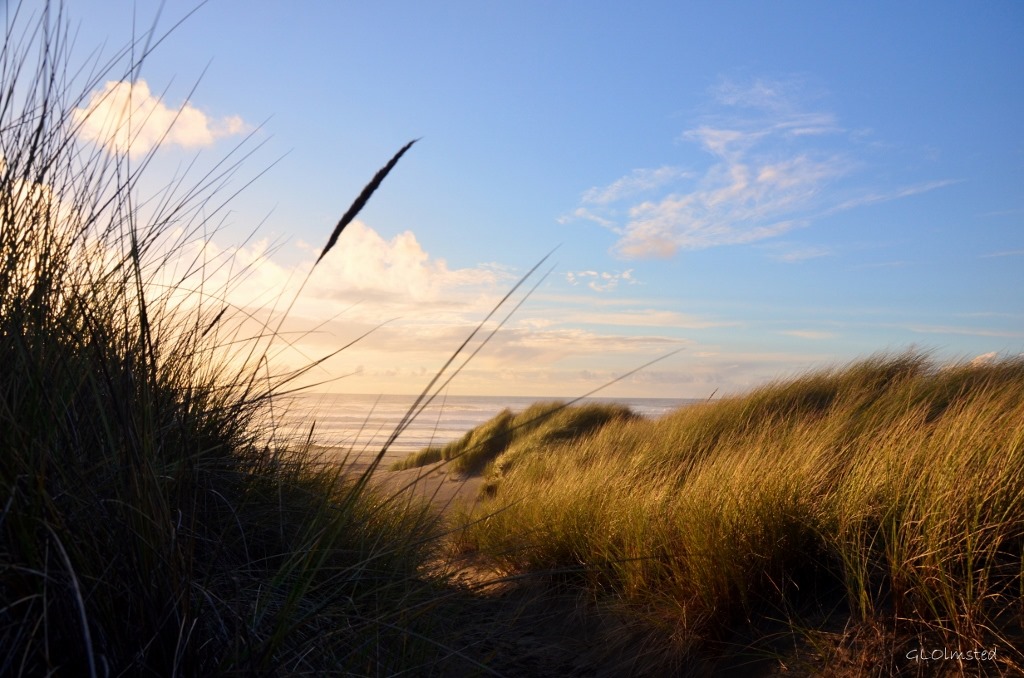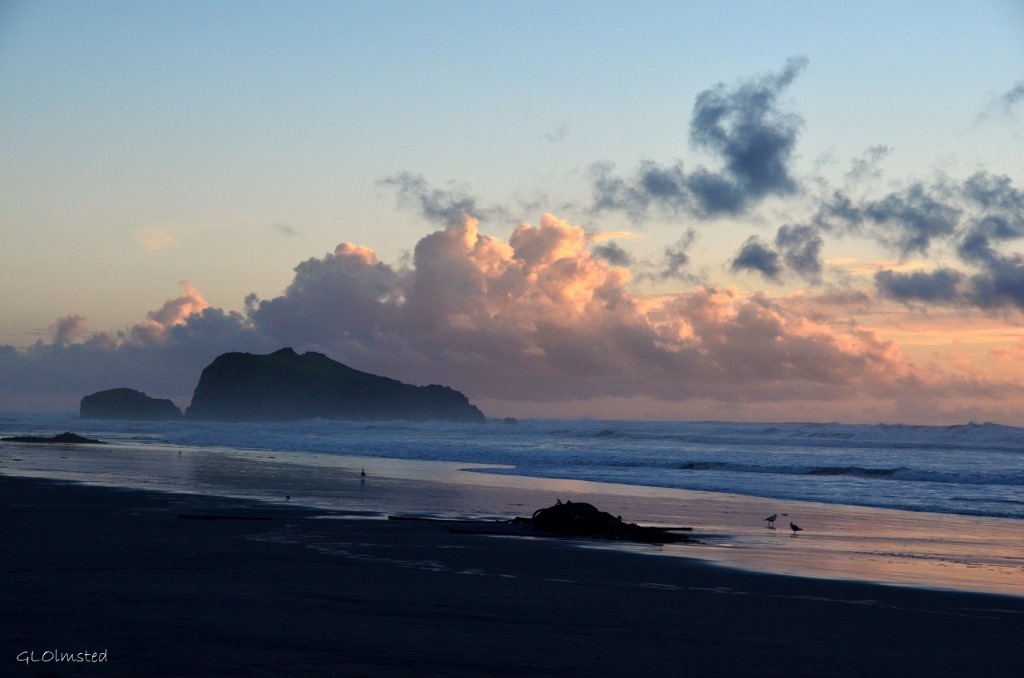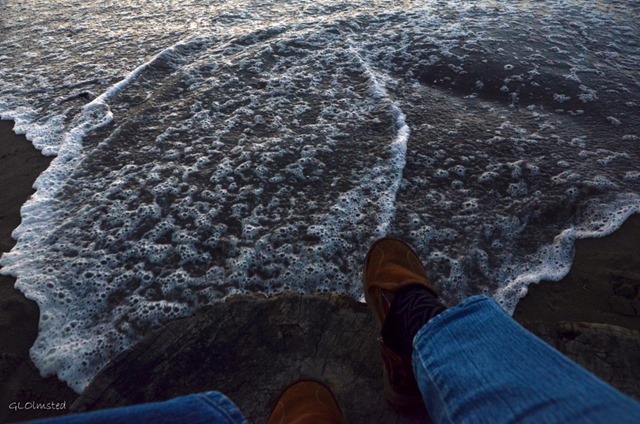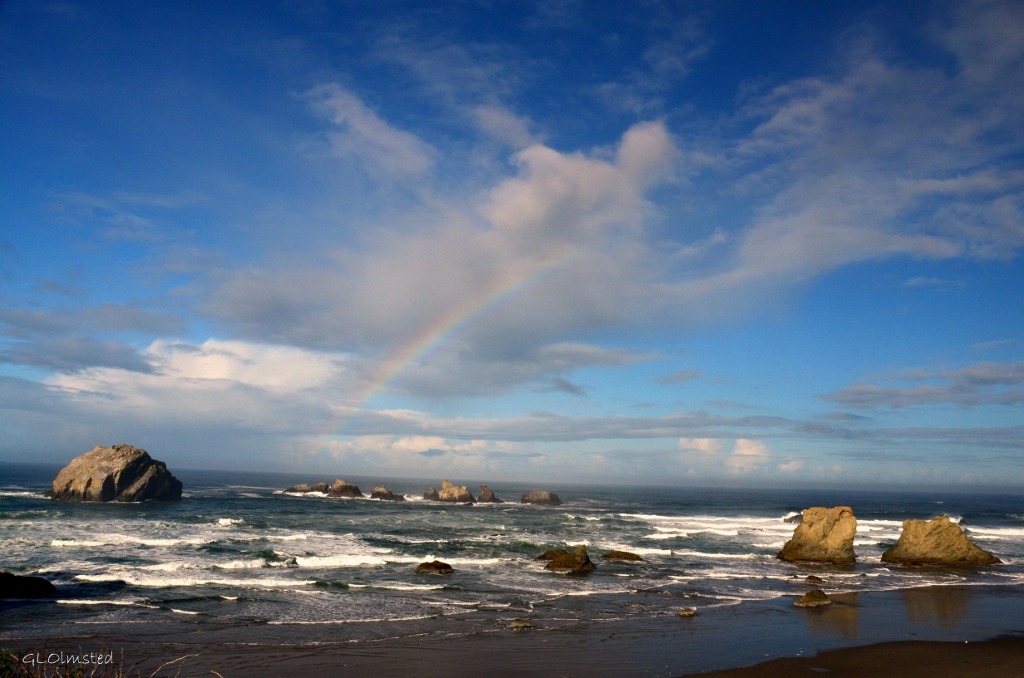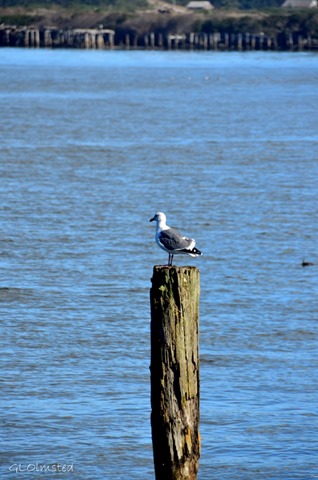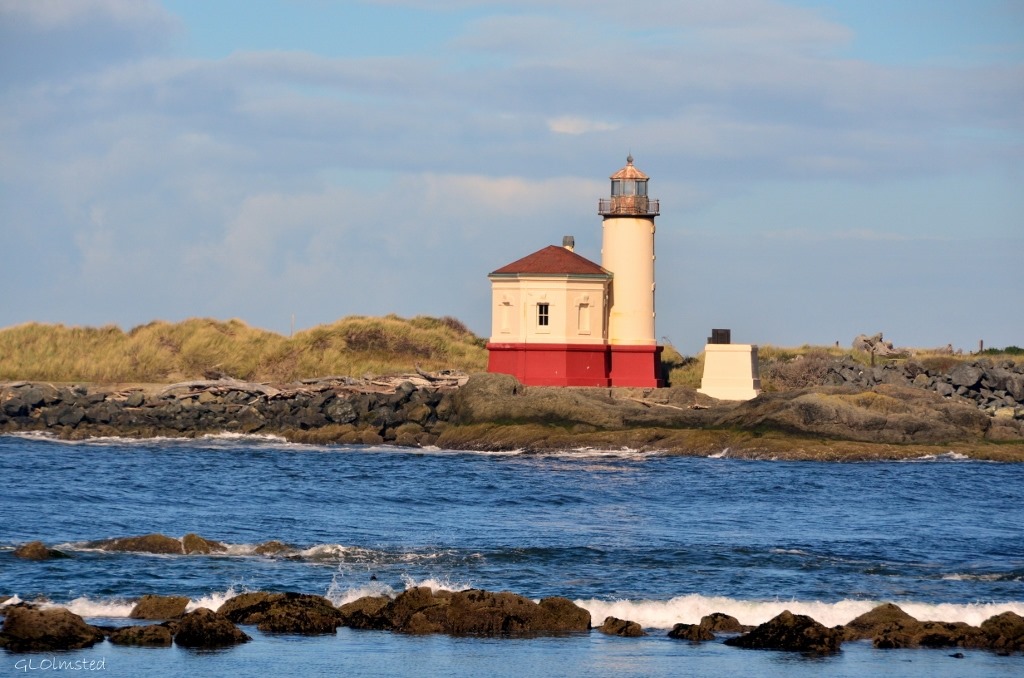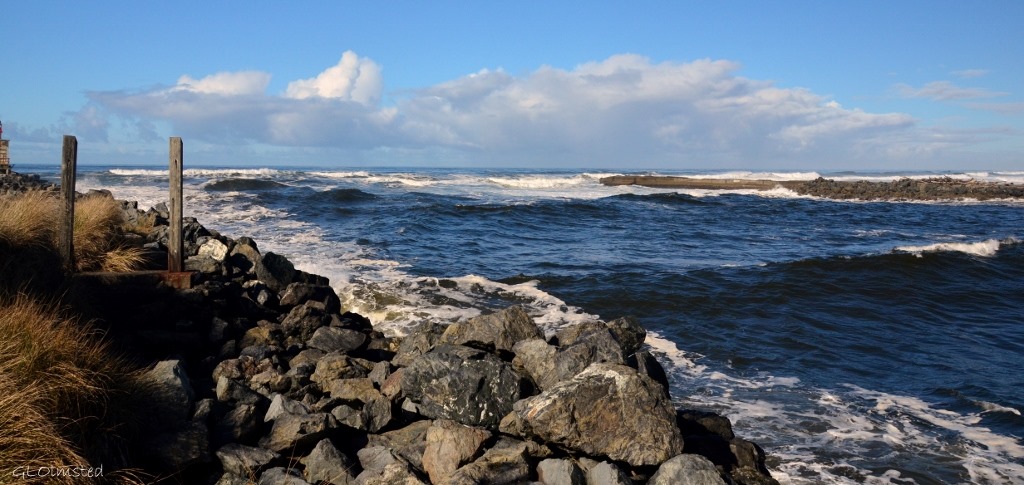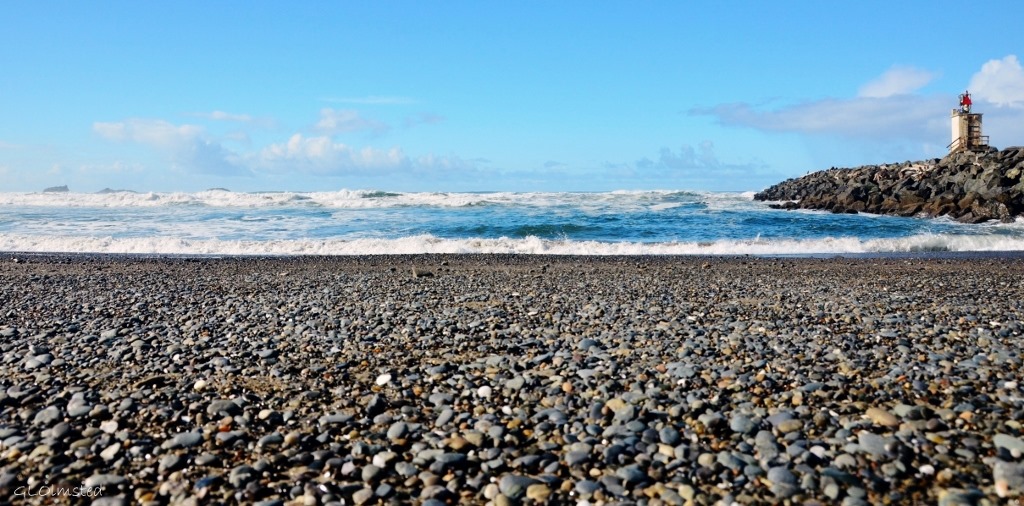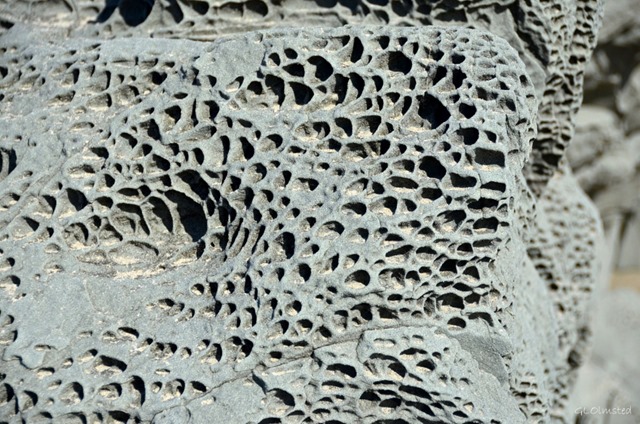 Being the Columbia River carved through the Cascade Mountains to create the closest route to sea level it’s not surprising that Lewis and Clark took this water option on their journey west. But today there are three road options and two railways that parallel the river in the two states that border it. Washington and Oregon both offer highways and byways along the Columbia River Gorge.
Being the Columbia River carved through the Cascade Mountains to create the closest route to sea level it’s not surprising that Lewis and Clark took this water option on their journey west. But today there are three road options and two railways that parallel the river in the two states that border it. Washington and Oregon both offer highways and byways along the Columbia River Gorge.
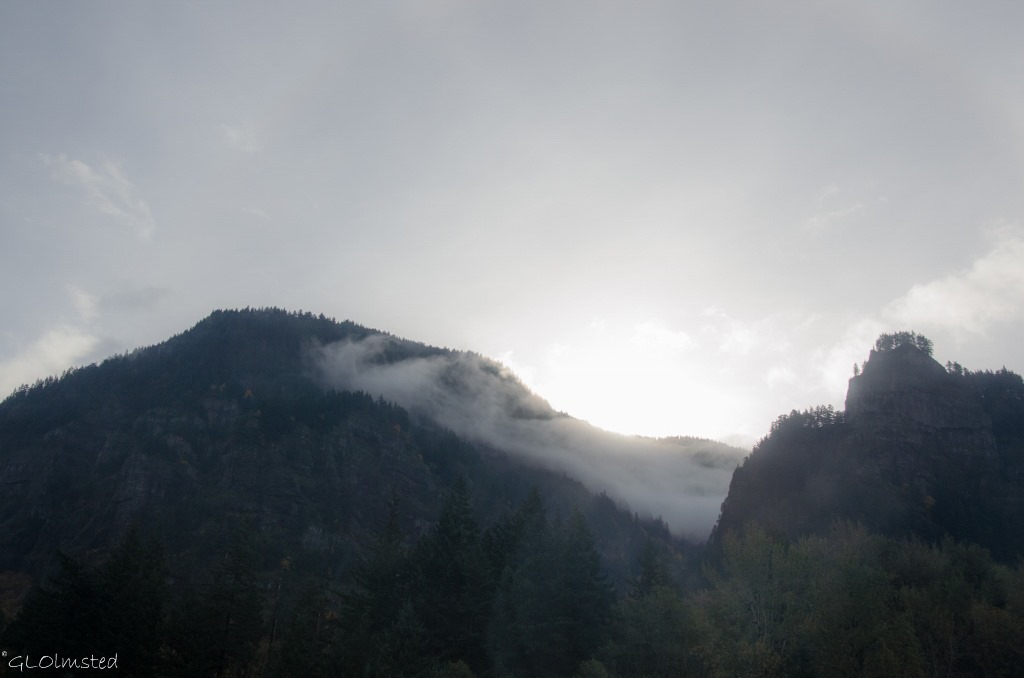 It was a gray day with clouds hanging low on the mountains. Yet the fall colors marching up the hillsides rocky cliffs brought light to the day. Berta and I took Interstate 84 east from Troutdale to Cascade Locks traveling about half the 75 mile Columbia River Gorge. Although providing scenic views there’s no place to pull over except for the Multnomah Falls exit where we didn’t stop.
It was a gray day with clouds hanging low on the mountains. Yet the fall colors marching up the hillsides rocky cliffs brought light to the day. Berta and I took Interstate 84 east from Troutdale to Cascade Locks traveling about half the 75 mile Columbia River Gorge. Although providing scenic views there’s no place to pull over except for the Multnomah Falls exit where we didn’t stop.
 As a passenger I looked longingly at multiple waterfalls along the way.
As a passenger I looked longingly at multiple waterfalls along the way.
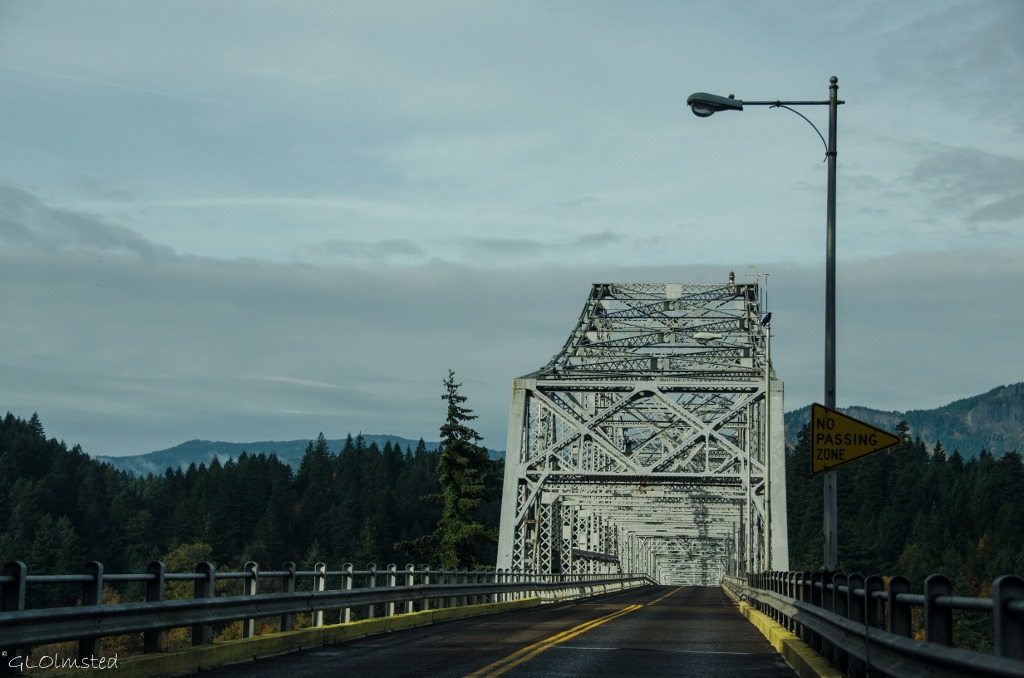 We crossed the mighty Columbia on Bridge of the Gods paying our $1 toll to Oregon. I call this the “hum” bridge as the metal grid brings song to the tires.
We crossed the mighty Columbia on Bridge of the Gods paying our $1 toll to Oregon. I call this the “hum” bridge as the metal grid brings song to the tires.
Washington 14
After visiting a friend we returned west on State Route 14 and I thought about all the times I’ve driven this route, although it had been a while. Back in 1996/97 I worked for US Fish and Wildlife living in Underwood on the east end of the Gorge. The following summer I lived and sold at a flea market in Carson. It’s simple rural country like you know I love but did mean a drive for shopping to either Vancouver or Hood River with Gorge-ous views along the way.
 One of the best things about driving on the Washington side of the river is looking across at the Oregon side.
One of the best things about driving on the Washington side of the river is looking across at the Oregon side.
Finally, on our last full day in Oregon we drove east under increasingly heavy skies on the Historic Columbia River Highway. Considering the lack of sun the glowing fall leaves gave off an almost eerie glow. And the wet leaf covered roadway could be slick but it’s a slow drive. Built between 1913-22, as the first planned scenic roadway in the US to be modeled after the great scenic roads of Europe and designed with an elegance that took full advantage of all the natural beauty along the route. Grades, curvature, distance and even expense were sacrificed to reach some scenic vista or to develop a particularly interesting point. Imagine driving this in a Model-T.
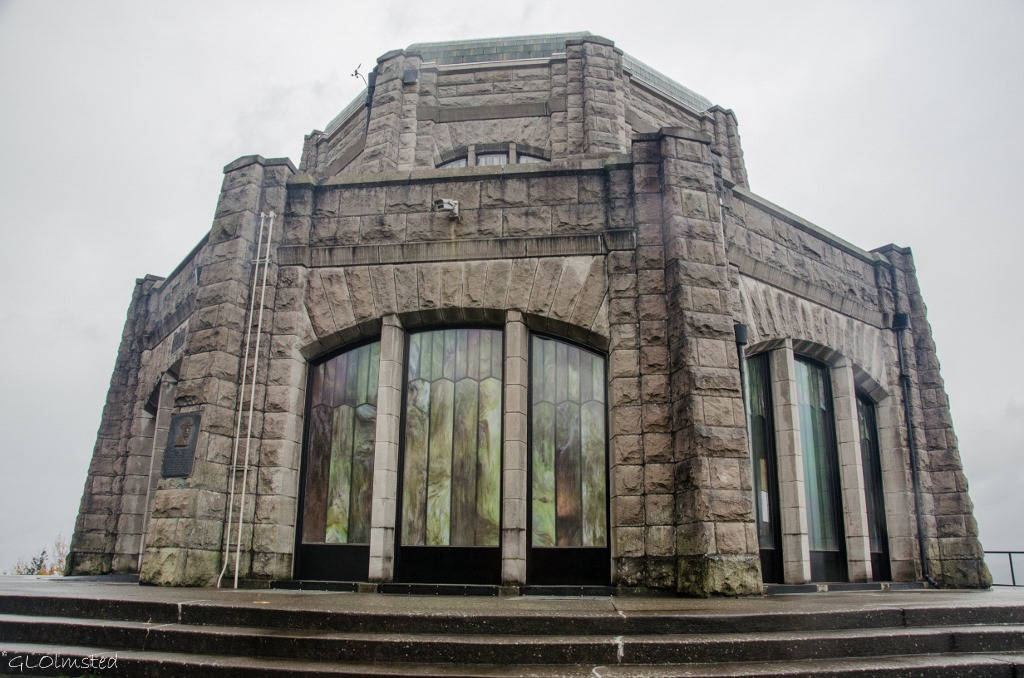 First stop, barely between the rain drops, Vista House built in 1918 on Crown Point as a rest stop observatory. The Vista House was designed as an example of modern German architecture, or the German equivalent of Art Nouveau. The gray sandstone structure is 44 feet in diameter and 55 feet high standing out as a landmark from both sides of the river. Commercial activities, like concession gift shops, have operated here since it’s opening. Then in 1982 the Friends of Vista House was formed by a group of community volunteers and in cooperation with the Oregon Parks and Recreation Department operate the building in a more interpretive manner. Unfortunately it’s only open on weekends so we could only peek in the windows. The first photo shows a view from Vista House that would certainly be better on a clear day.
First stop, barely between the rain drops, Vista House built in 1918 on Crown Point as a rest stop observatory. The Vista House was designed as an example of modern German architecture, or the German equivalent of Art Nouveau. The gray sandstone structure is 44 feet in diameter and 55 feet high standing out as a landmark from both sides of the river. Commercial activities, like concession gift shops, have operated here since it’s opening. Then in 1982 the Friends of Vista House was formed by a group of community volunteers and in cooperation with the Oregon Parks and Recreation Department operate the building in a more interpretive manner. Unfortunately it’s only open on weekends so we could only peek in the windows. The first photo shows a view from Vista House that would certainly be better on a clear day.
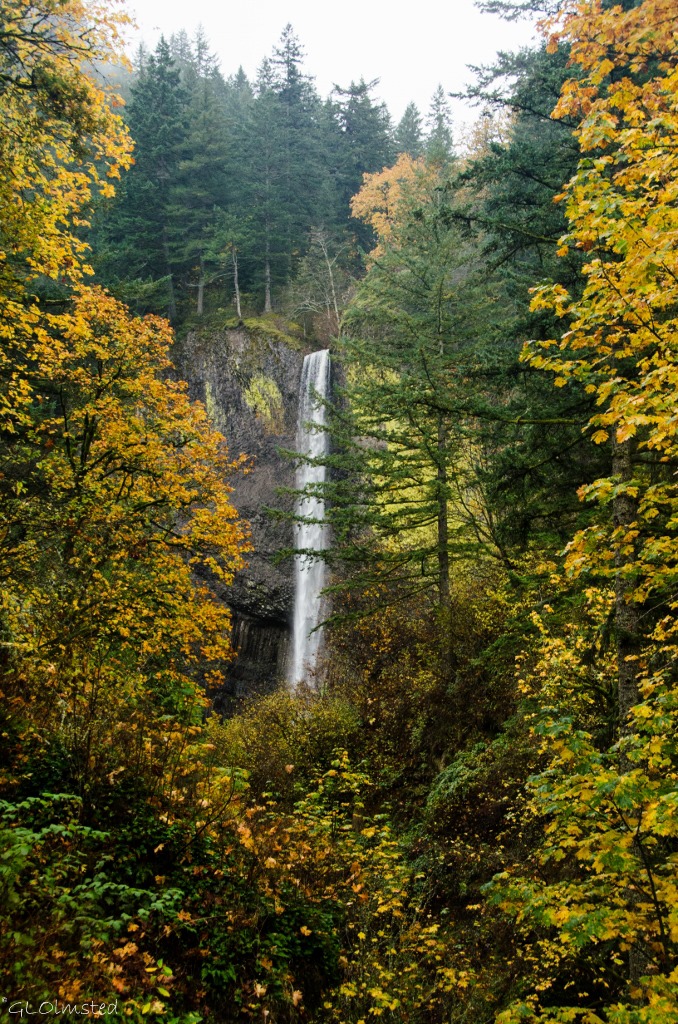 Latourell Falls Guy W Talbot State Park
Latourell Falls Guy W Talbot State Park
Instead we dealt with the rain making a few quick stops at easily accessed viewpoints. Upon completion of the highway in 1915, many generous landowners donated property in an act to preserve and share the splendor and create scenic stops along the way.
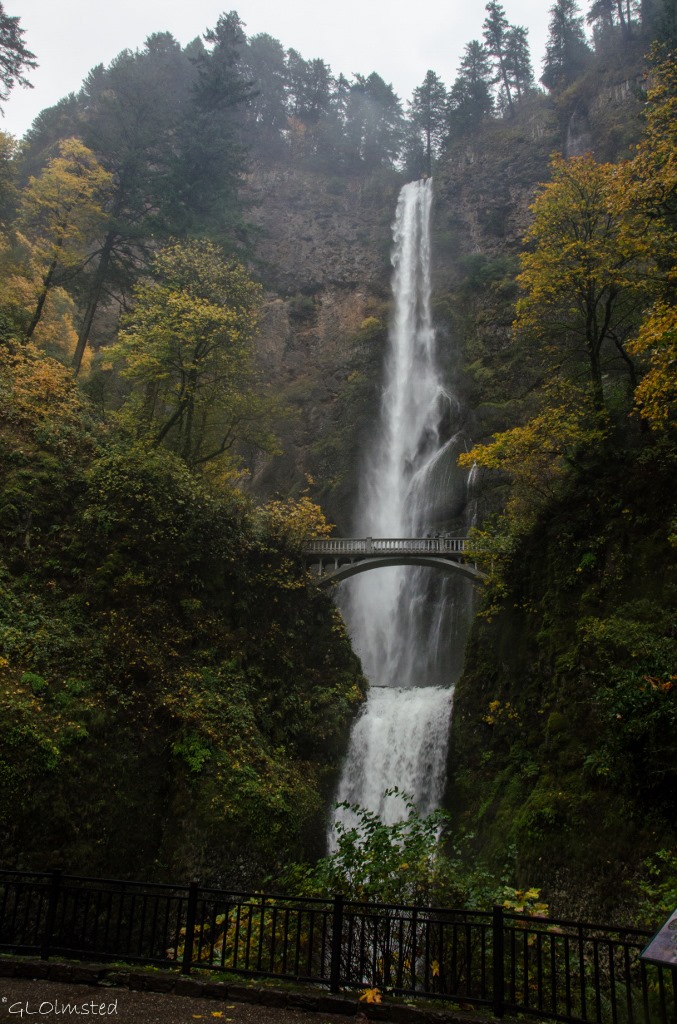 By time we got to the famous giant of Multnomah Falls the rain had seriously increased and Berta almost didn’t come for a look. I couldn’t help it. I was drawn to the sound of the thundering water. Trying to hold the camera under my rain jacket yet still got tiny water drops on the lens. Multnomah Falls is the second highest year-round waterfall in the US and one of 77 on the Oregon side of the Columbia River Gorge. Created by underground springs from Larch Mountain the falls plunge off steep basalt cliffs 543 feet to the upper pool then another 69 feet before flowing into the Columbia River.
By time we got to the famous giant of Multnomah Falls the rain had seriously increased and Berta almost didn’t come for a look. I couldn’t help it. I was drawn to the sound of the thundering water. Trying to hold the camera under my rain jacket yet still got tiny water drops on the lens. Multnomah Falls is the second highest year-round waterfall in the US and one of 77 on the Oregon side of the Columbia River Gorge. Created by underground springs from Larch Mountain the falls plunge off steep basalt cliffs 543 feet to the upper pool then another 69 feet before flowing into the Columbia River.
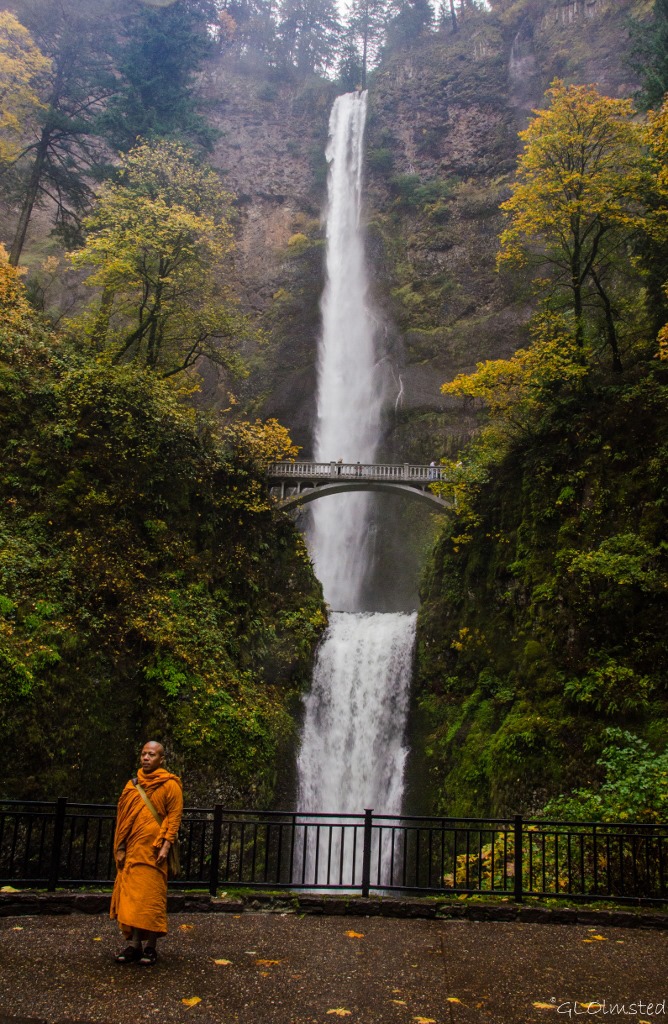 I paused to allow for the photo of the monk by his two companions then couldn’t resist one myself due to the bright colored wrap that almost matched the fall colors. I usually take landscape photos, trying to leave people out. Yet this was definitely ‘the’ photo of the day. At least the rain reduced the crowd.
I paused to allow for the photo of the monk by his two companions then couldn’t resist one myself due to the bright colored wrap that almost matched the fall colors. I usually take landscape photos, trying to leave people out. Yet this was definitely ‘the’ photo of the day. At least the rain reduced the crowd.
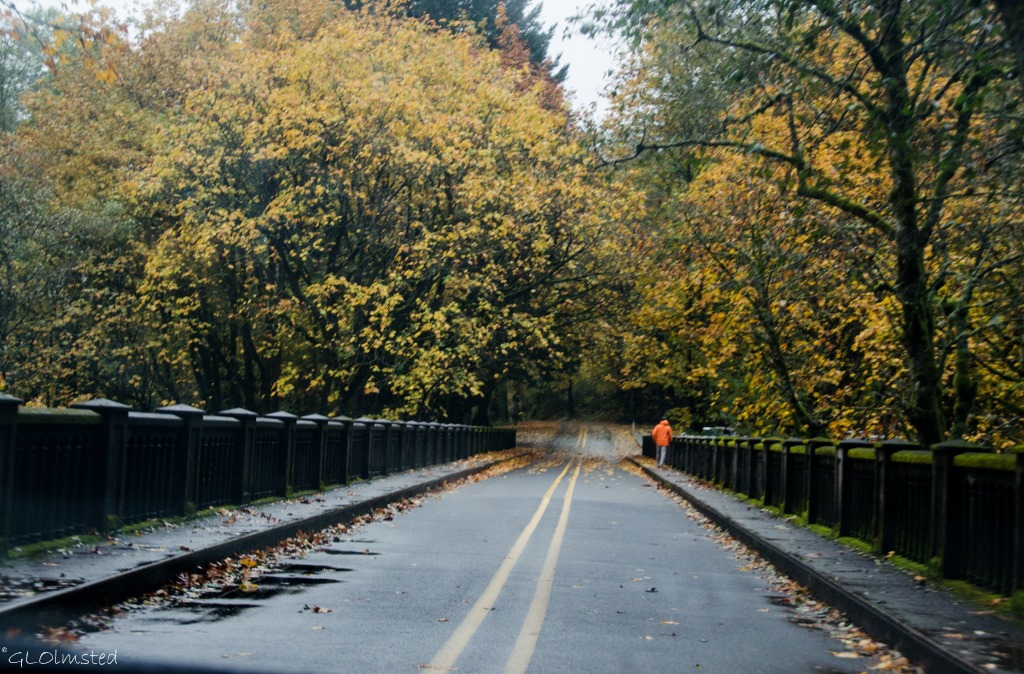 We didn’t stay very long or continue east for more scenic opportunities and instead returned on the scenic highway driving slowly in the rain on the oil slicky leaves. We stopped at the Tippy Canoe where we split a huge burger for lunch.
We didn’t stay very long or continue east for more scenic opportunities and instead returned on the scenic highway driving slowly in the rain on the oil slicky leaves. We stopped at the Tippy Canoe where we split a huge burger for lunch.
Train
Before locomotives and 45 years after Lewis and Clark braved the Columbia River, Hardin Chenowith built the first railroad in what would eventually be Washington. A wagon on wood rails pulled by a single mule assisted early settlers around the Columbia’s rapids in 1851 for 75 cents for every 100 pounds of freight. Between 1855 and 1862 Joseph Ruckel and Harrison Olmstead operated a similar operation on the south side of the river. (Wonder if he’s an ancestor of mine.) This was followed by the first steam engine in the Pacific Northwest called the “Oregon Pony”. By 1908 the Great Northern Railway and Northern Pacific Railroad completed a line along the north side of the Columbia River.
Today the Mount Hood Railroad offers scenic excursions along Oregon rails including trail robberies, murder mysteries and a polar express.
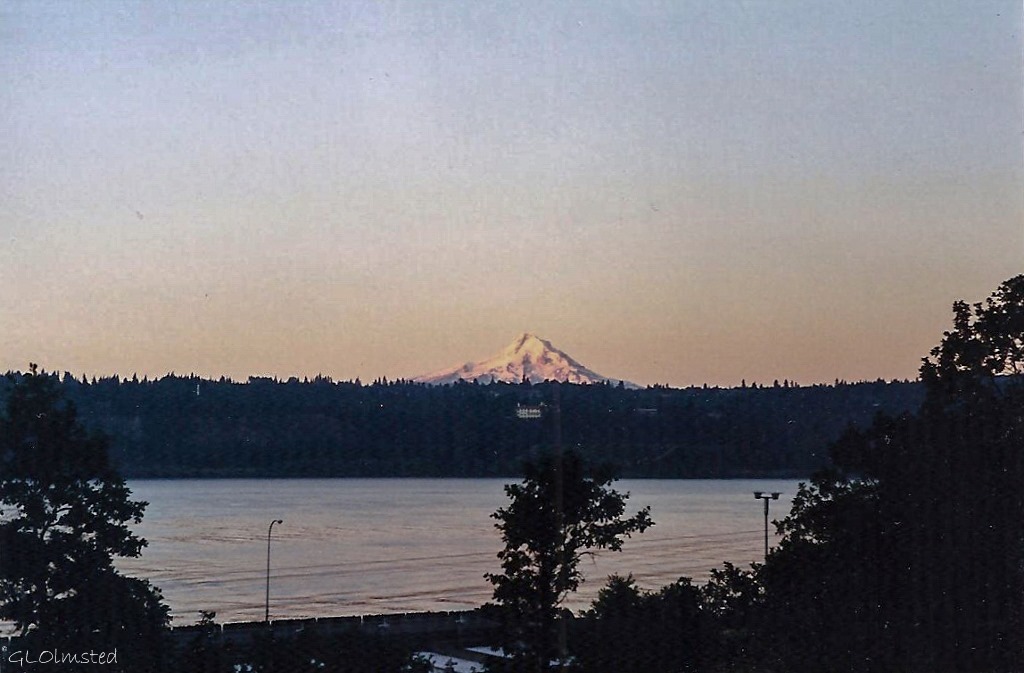 Rail lines run between the highways and the river in both states. My Fish & Wildlife housing looked across the Columbia River and sat about 100 feet from the Washington SR14. Those trains ran every 22 minutes.
Rail lines run between the highways and the river in both states. My Fish & Wildlife housing looked across the Columbia River and sat about 100 feet from the Washington SR14. Those trains ran every 22 minutes.
Once thought to be the Northwest Passage, this powerful river of the west begins in British Columbia, Canada and flows 1200 miles to the Pacific Ocean at Astoria. The second largest river in North America has been altered over time from the raging waters Lewis and Clark faced to a languishing series of pools between hydroelectric dams. Steamboats, railroads, and highways replaced canoes and rafts. Barges hauling grain, livestock, lumber, fruit, and vegetables still ply the water’s today.
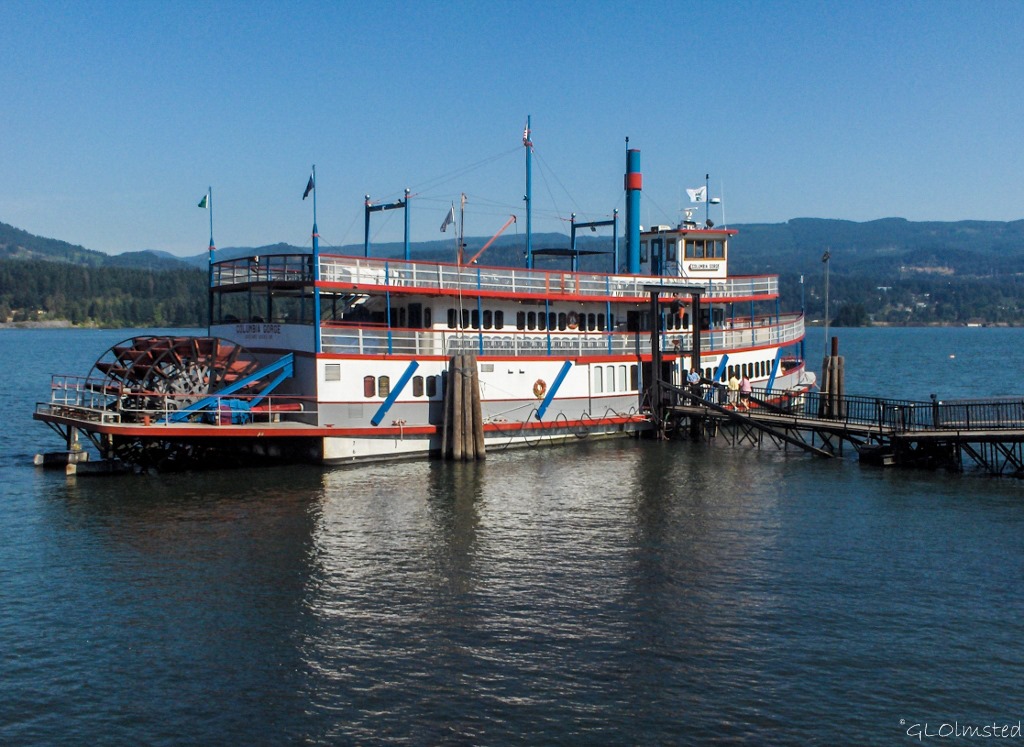 Steamboat excursions are available out of Portland and Cascade Locks. In 2006 I enjoyed a champagne brunch aboard the Columbia Gorge out of Cascade Locks.
Steamboat excursions are available out of Portland and Cascade Locks. In 2006 I enjoyed a champagne brunch aboard the Columbia Gorge out of Cascade Locks.
Because I love rocks here’s a brief geology of the gorge. So, about 40-20 million years ago thousands of volcanic eruptions piled layers of volcanic ash, lava, and mudflows over this region. Millions of years later, mudflows poured off those volcanoes, covering the land with hundreds of feet of ash, boulders, and cobbles. 17-12 million years ago volcanic cracks in the earth’s crust spread lava across the region up to 2,000 feet (600 meters) deep frequently cooling into columnar basalt. 2 million to 700,000 years ago hundreds of volcanoes erupted during uplift of the Cascade mountain range and the Columbia River carved out a deep gorge. During the last ice age 16,000-14,000 years ago a 2,000 foot (600 meters) high ice dam that blocked the river collapsed hundreds of times allowing for quick floods to scour the Gorge.
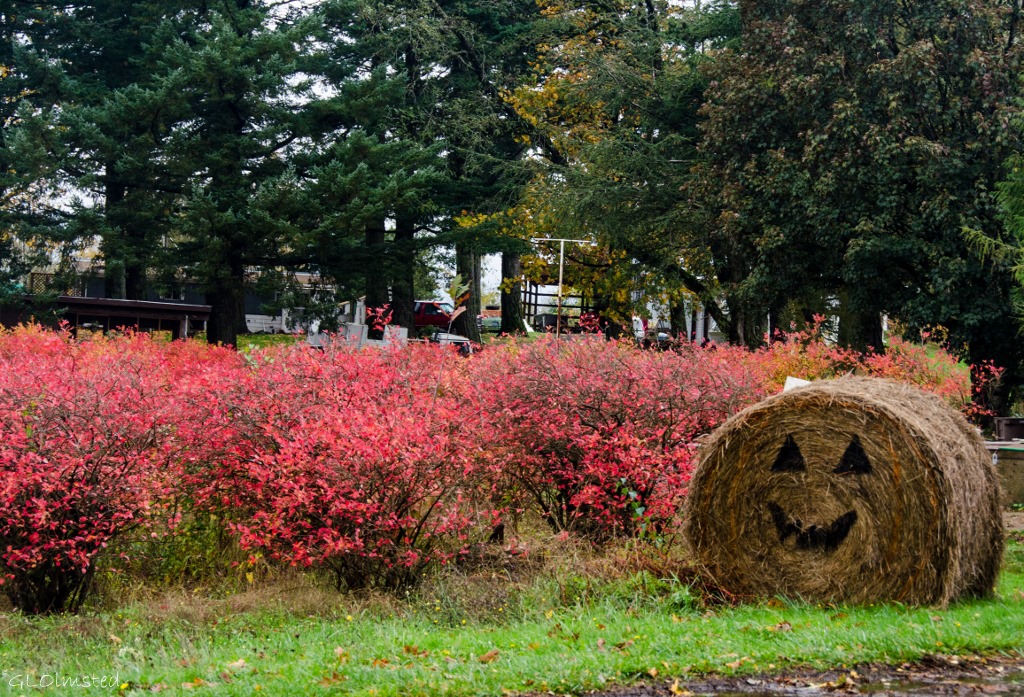 Columbia River Gorge National Scenic Area
Columbia River Gorge National Scenic Area
Even if you’re not into the geology, the Gorge offers miles of hiking through lush forests, past waterfalls and streams with distant views of the Cascade Mountains. The Columbia River Gorge National Scenic Area was established in 1986 to protect and enhance the scenic, natural, cultural, and recreational resources of the Columbia River Gorge encompassing 292,500 acres, approximately 85 miles long and approximately 4,000 feet deep. There’s a lot going on in these acres including wilderness areas, 13 cities, 6 counties, 4 developed campgrounds, 13 state parks, 2 National Trails, 57 Forest Service trails with a combined length of 218 miles, 53 waterfalls, 2 scenic rivers, over 800 species of wildflowers, more than 200 species of birds, and many species of large and small animals. Whatever your interests, you just can’t go wrong here.
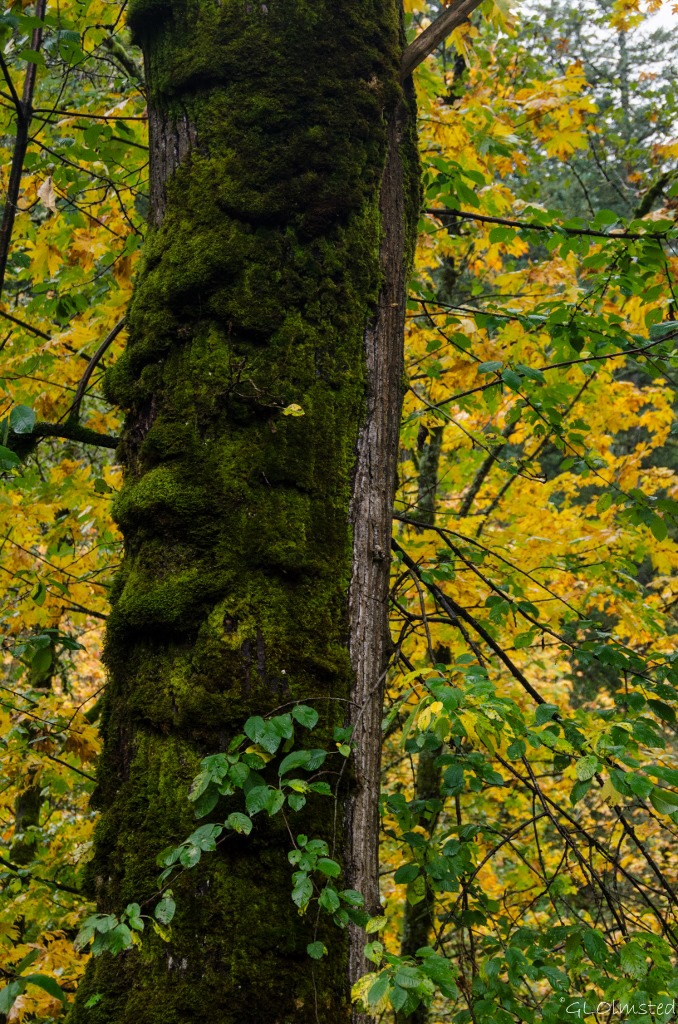 After a week in Oregon, Berta described the weather as “drippy” and says if a building hasn’t been painted in the last week it needs it. Yet there wouldn’t be the lush growth, waterfalls and rivers without that drip. Every season is gorgeous in the Gorge. Summer can be very busy with 2 million visitors a year. Yet there are so many options, by road, rail, water or foot. And although a little ‘drippy’ I found fall a gorgeous time to visit.
After a week in Oregon, Berta described the weather as “drippy” and says if a building hasn’t been painted in the last week it needs it. Yet there wouldn’t be the lush growth, waterfalls and rivers without that drip. Every season is gorgeous in the Gorge. Summer can be very busy with 2 million visitors a year. Yet there are so many options, by road, rail, water or foot. And although a little ‘drippy’ I found fall a gorgeous time to visit.

